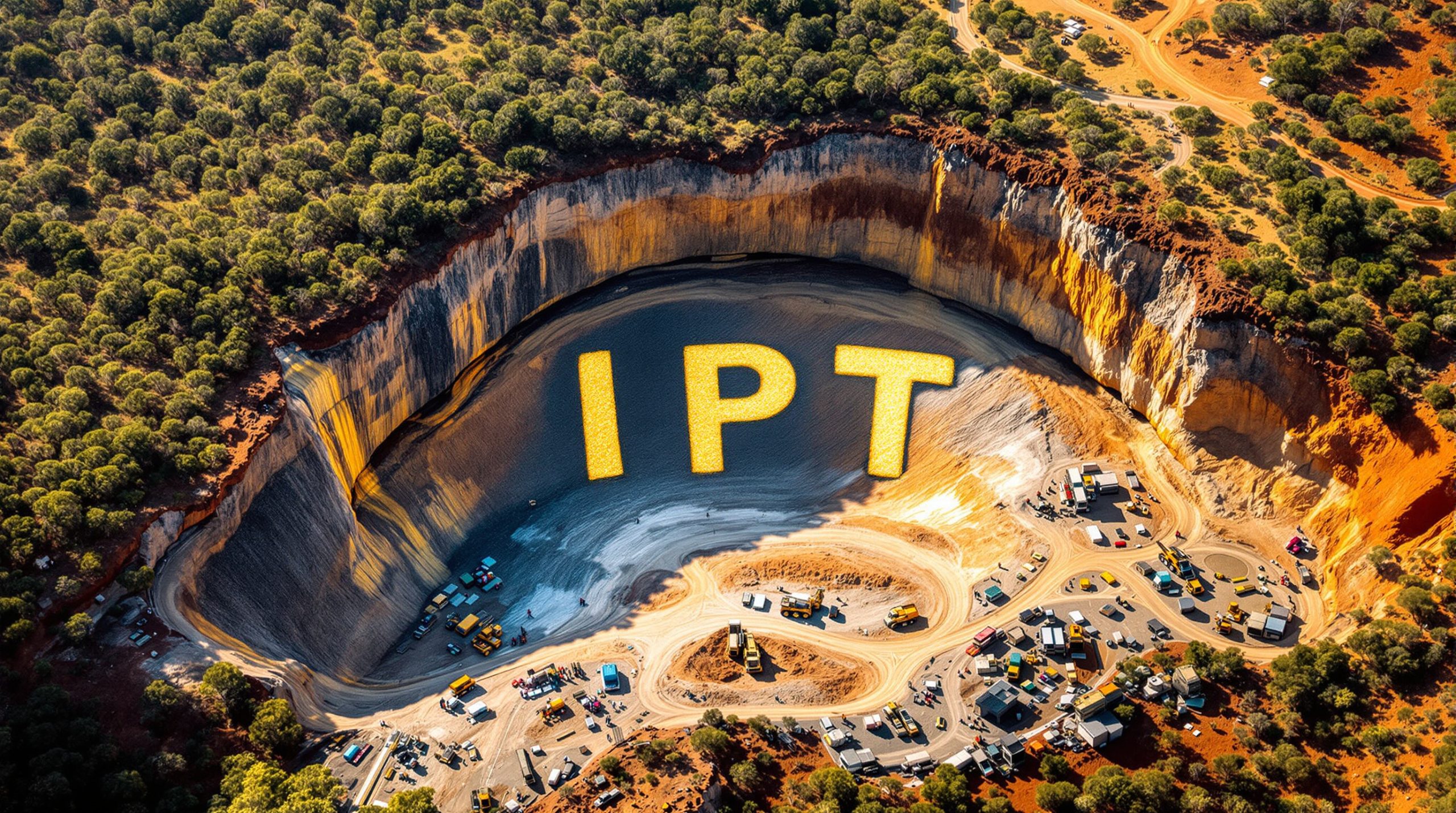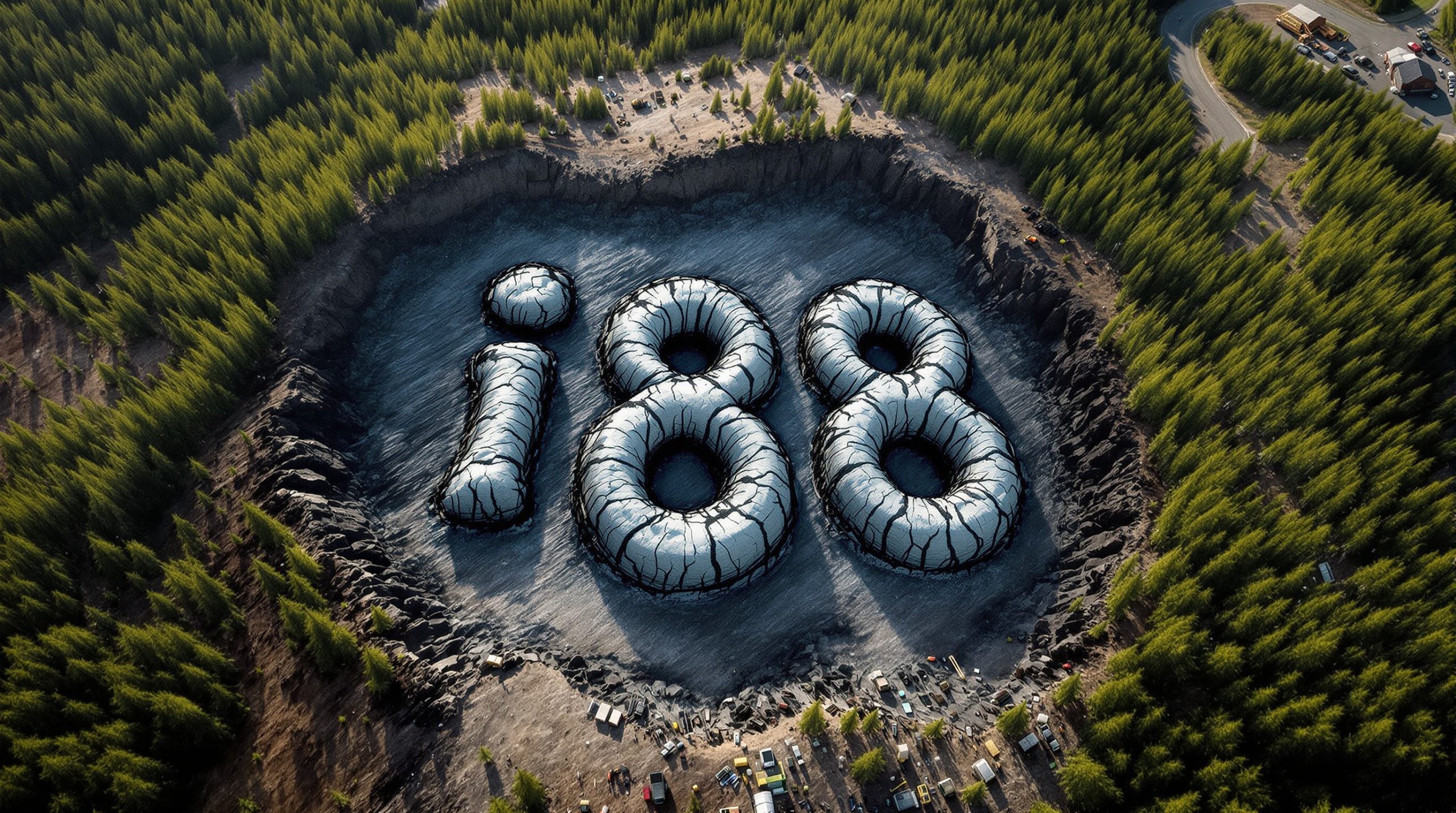First-Pass Results Confirm Hydrothermal Manganese System with Bonus Base Metals
Recent rock chip sampling at Lucy Creek 2 has confirmed the presence of high-grade manganese mineralization, with portable XRF results showing values up to 33.56% MnO in one sample. Importantly, the samples also revealed elevated base metal signatures including zinc, lead, and silver – elements that support the potential for a hydrothermal-style mineralization system.
"We are encouraged by the early signs emerging from Lucy Creek 2, with portable XRF results indicating high-grade manganese alongside elevated zinc, lead, and silver — elements that support the potential for a hydrothermal-style system," said Litchfield's Managing Director. "The manganese grades we're seeing, including 33.56% MnO in one sample, are very promising and provide a solid technical basis for further exploration."
Key Rock Chip Results from Lucy Creek 2
| Sample ID | MnO (%) | Iron (%) | Zinc (PPM) | Lead (PPM) | Silver (PPM) |
|---|---|---|---|---|---|
| RCLCK001 | 33.56 | 3.01 | 337 | 1131 | 18 |
| RCLCK007 | 28.45 | 4.47 | 862 | 1795 | 0 |
| RCLCK011 | 30.39 | 9.05 | 761 | 900 | 0 |
| RCLCK003 | 24.16 | 22.14 | 1133 | 765 | 0 |
| RCLCK010 | 23.59 | 4.17 | 958 | 643 | 0 |
Note: Values shown are from portable XRF analysis and will be confirmed by laboratory assays.
The Lucy Creek 2 prospect is defined by an 800m x 200m, north-trending zone of outcropping manganese oxide mineralization, with historic rock chip samples returning values as high as 52% Mn. This aligns with Litchfield's interpretation that Lucy Creek 2 could represent a Bootu Creek-style manganese deposit – a significant comparison considering Bootu Creek's historical mineral resource of 32.5 million tonnes at 22.6% Mn prior to mining.
Understanding Hydrothermal Manganese Deposits
Hydrothermal manganese deposits form when mineral-rich, heated fluids circulate through existing rock formations, replacing the original minerals with manganese oxides. Unlike sedimentary manganese deposits that form through gradual accumulation in marine environments, hydrothermal systems often contain higher grades and can be associated with base metals like zinc, lead, and silver.
Key characteristics of hydrothermal manganese deposits include:
- Higher grades: Often contain more concentrated manganese mineralization
- Associated metals: Frequently contain zinc, lead, silver and other metals
- Structural controls: Typically form along faults or other fluid pathways
- Economic potential: Can be more economical to extract due to grade and concentration
The Bootu Creek deposit, located 490km north-northwest of Lucy Creek 2, serves as a possible analog for the Lucy Creek 2 mineralization. Bootu Creek had a historical mineral resource of 32.5 million tonnes at 22.6% Mn prior to mining operations, demonstrating the potential scale of such deposits in the region.
For investors, the presence of base metals alongside manganese provides potential for multiple commodity exposure within a single project, potentially enhancing the economic value of any future resource. Manganese itself is increasingly important not only for traditional steel production but also in emerging battery technologies, particularly for electric vehicles.
Strategic Exploration Plan Now Unfolding
Litchfield has outlined a systematic approach to advance exploration at Lucy Creek 2:
- Additional surface sampling: Further rock chip and soil sampling to confirm REE anomalism and delineate manganese-base metal zones
- Airborne geophysical survey: Detailed magnetic and radiometric survey (partially NT Government-funded)
- Ground EM survey: Targeting conductive zones associated with hydrothermal manganese mineralization
This methodical approach will help the company refine drilling targets and maximize the efficiency of future exploration expenditure. The company's exploration strategy follows modern best practices by establishing a solid geological framework before committing to more expensive drilling programs.
The partially government-funded airborne survey highlights the Northern Territory government's support for resource development in the region, effectively leveraging shareholder funds and extending Litchfield's exploration budget.
Bomb Diggity Work Program Refined Following New Insights
At the company's Oonagalabi project, recent soil sampling at the Bomb Diggity prospect has provided new insights that are helping refine the exploration approach. The geological work indicates that surface mafic amphibolite is likely a relatively flat-lying 'cover sequence' that obscures the causative source for the magnetic and gravity anomalies at depth.
The Bomb Diggity magnetic anomaly is interpreted to be genetically related to the magnetic anomaly observed within the western margin of the main mineralized zone at Oonagalabi, which previously returned 15m @ 0.45 g/t Au, 0.17% Bi, 0.35% Cu, 0.12% Zn from 50m in drill hole OGRC002.
Litchfield now interprets the Bomb Diggity prospect area to be the causative source for Au-Bi mineralization, where the magnetic anomaly could represent either a magnetic intrusion or an intrusion-related, magnetite-bearing hydrothermal breccia. The company plans to test this hypothesis with a deep diamond drill hole partially funded through the NTGS GDC Grant program (up to $108,000).
This refined geological understanding represents an evolution in Litchfield's exploration model for the area, allowing for more targeted and effective testing of the Bomb Diggity prospect.
Why Investors Should Take Note of Litchfield Minerals
Litchfield Minerals is positioned at the intersection of several attractive investment themes:
-
Critical Minerals Exposure: Manganese is essential for steel production and increasingly important in battery technology, particularly for electric vehicles and energy storage systems.
-
Multiple Commodity Potential: The Lucy Creek project shows potential for manganese plus base metals (zinc, lead, silver), while Oonagalabi has demonstrated gold-bismuth-copper-zinc mineralization.
-
Government Support: The company has secured NT Government funding for multiple exploration programs, effectively leveraging shareholder funds and extending exploration budgets.
-
Systematic Exploration Approach: Litchfield is applying modern exploration techniques to underexplored regions with demonstrated mineralization, increasing the chances of discovery while managing risk.
-
Strategic Location: The Northern Territory is a mining-friendly jurisdiction with established infrastructure and a government supportive of resource development.
For investors seeking exposure to critical minerals exploration with multiple potential discovery paths, Litchfield Minerals presents an opportunity to participate in the early stages of systematic exploration across promising projects with demonstrated mineralization.
The company's dual focus on manganese/base metals at Lucy Creek and gold/copper at Oonagalabi provides diversified discovery potential, with near-term catalysts from ongoing exploration programs likely to drive news flow in the coming months.
With the global transition to clean energy technologies creating increased demand for both battery metals and traditional industrial metals, companies like Litchfield that are exploring for these commodities may be well-positioned to benefit from these long-term trends.
Interested in Critical Minerals with Multiple Commodity Potential?
Discover how Litchfield Minerals is advancing its promising Lucy Creek manganese project with bonus base metals alongside its gold-copper Oonagalabi project. With high-grade manganese results up to 33.56% MnO and government-backed exploration programmes, Litchfield offers investors exposure to critical minerals essential for both traditional industries and the energy transition. For more information about this ASX-listed explorer and its systematic approach to unlocking value across multiple commodities, visit www.litchfieldminerals.com.au today.




